Japan has become a top destination for travelers since the pandemic, and this year alone, travel to Japan is up by 126 percent, according to Virtuoso. But as visitor numbers soar, popular cities like Kyoto and Osaka are increasingly impacted by over-tourism. To make the most of a family trip with teens without getting lost in the crowds, correspondent Emily Goldfischer decided to focus on Kyoto’s quieter outskirts and use strategic timing to enjoy the best of both worlds: exploring iconic sites, TikTok trends and also hidden gems. She offers a guide to navigating the “City of Ten Thousand Shrines,” plus a memorable day trip to Osaka.
Our home base, MIMARU Kyoto Kawaramachi Gojo is ideal for a family trip. Located in the quieter Kiyamachi neighborhood along the peaceful Takase River, it offers easy access to Kyoto’s liveliest areas. Within walking distance are Gion, Pontocho Alley and Nishiki Market, offering a mix of traditional charm with modern energy. The area’s scenic riverside paths, beautifully illuminated at night, make it a perfect starting point for exploring Kyoto.

The spacious, apartment-style rooms at MIMARU Kyoto Kawaramachi Gojo sleep four. We stayed in Room No. 106, which had bunk beds for the kids and a large Western-style king bed for parents. We loved the built-in dining area for lounging and eating, as well as the efficient kitchen with a full fridge and cooktop. Clever Touch: The toilet and shower are in separate areas, making it more convenient for families. Bonus: The hotel has a clean, well-equipped laundry room, which came in very handy, as Kyoto was in the middle of our two-week Japan itinerary. Good to know: There’s also a kids’ playroom and a gym.
One of the fun perks of the hotel’s location was the nearby konbini (Japanese convenience stores) like Lawson, FamilyMart and 7-Eleven. Unlike in the U.S., convenience stores in Japan are legendary for their quality offerings—from sushi and rice balls to seasonal snacks—and they’re the subject of countless Instagram and TikTok posts, making my teens obsessed with trying different things. We enjoyed a few takeaway meals in our room, giving us a taste of everyday Japanese life. Top Picks: We loved the onigiri (rice balls), the creamy egg salad sandwiches and the frozen crème brûlée.
Experiences: Crafting
To escape the crowds of the city center, we ventured to Ohara, a picturesque countryside village, about an hour’s drive north of Kyoto. Here, we spent a morning at Ohara Kobo, a traditional dyeing workshop, where we learned the centuries-old craft of natural dyeing from the owner Juichi Ueda. Using colors extracted from tree roots and vegetables, we experimented with different patterns to create our own scarves. This hands-on experience gave us an appreciation for Japan’s meticulous craftsmanship and provided us with unique souvenirs. Ohara itself is a peaceful escape, surrounded by lush mountains and rural landscapes. The area felt refreshingly removed from the busier parts of Kyoto, offering a window into traditional Japanese life.
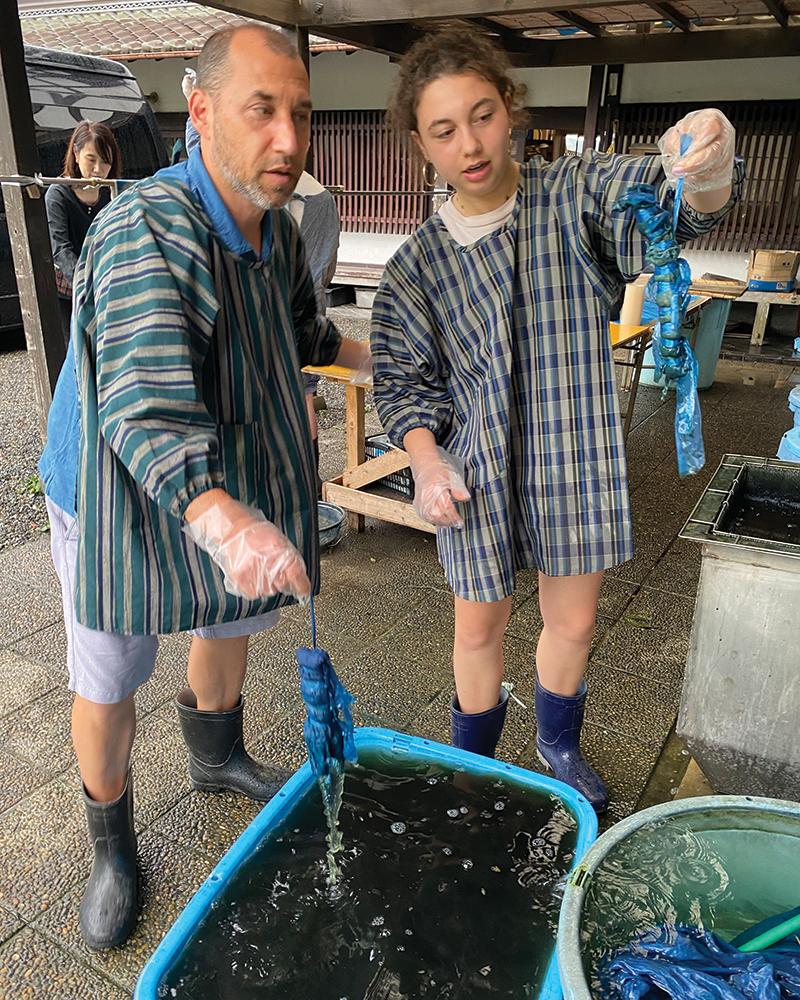
Riding to the Sites
One of our favorite off-the-beaten-path experiences was a half-day bike tour through eastern Kyoto with Road Bike Rental Japan. Covering 18 miles in three hours, we cycled alongside the peaceful Yamashina River, past quaint old houses and small temples, enjoying the quieter side of Kyoto. The high-end Cannondale bikes were in pristine condition, and the mostly flat terrain with a few hills was enjoyable and leisurely.
Our guide, Aaron Facemire, shared useful insights about the region and was happy to snap photos throughout the journey, which ended at the famous Fushimi Inari Shrine. Known for its thousands of red torii gates, the scenic red canopied pathway up the mountain was a favorite. Top Tip: While we visited Fushimi at the end of our tour, arriving first thing in the morning or in the evening (the shrine never closes) would be better timing to avoid crowds.
Shrines and Temples
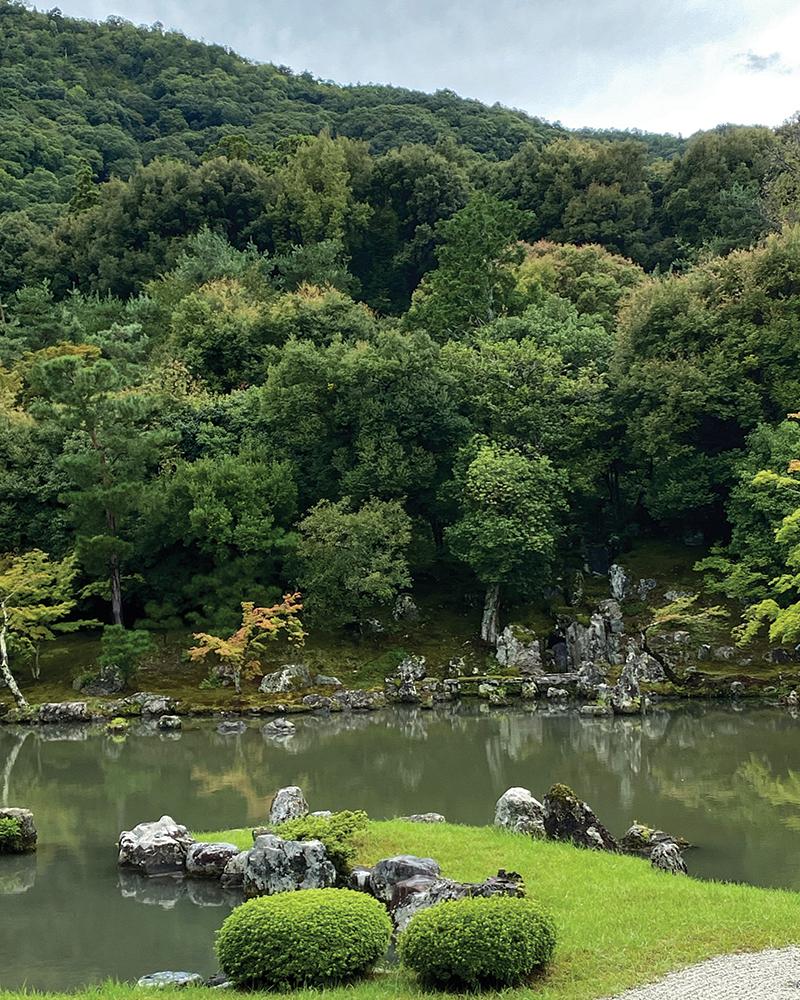
As Japan’s imperial capital for over a thousand years, Kyoto is one of the most historically rich cities in the country. It’s home to more than 1,600 Buddhist temples, 400 Shinto shrines and 17 UNESCO World Heritage Sites, earning it the nickname “City of Ten Thousand Shrines,” an exaggeration but not in feeling. Let’s be real—it’s easy to get “templed out,” especially with kids, so here are a few not-to-miss highlights:
- Sanjusangendo: Located slightly off the beaten path, this temple is unlike any other in Kyoto. It houses 1,001 human-sized statues of Kannon, the goddess of mercy, along with a massive Buddha statue.
- Tenryu-ji Temple: Situated in the Arashiyama district, this UNESCO World Heritage Site is known for its beautifully designed Zen gardens by Muso Soseki. The immaculate gardens offer a peaceful escape and connect directly to the Arashiyama Bamboo Grove. Walking through this iconic bamboo forest is like stepping into a fairytale, with towering bamboo stalks creating a mystical green canopy.
- Kinkaku-ji (Golden Pavilion): The sight of Kinkaku-ji’s golden exterior shimmering over a tranquil pond is quintessential Kyoto.
Kyoto’s Tourist Favorites
Certain Kyoto attractions are well-known for good reason, and with a bit of planning, they can be enjoyed without the crowds. Gion, Kyoto’s historic geisha district, is a fascinating area to explore, especially in the early evening when you might spot a geisha or maiko on her way to an appointment. A bit touristy but super fun is the Maikoya Tea Experience. They dress you in traditional kimonos, and for women, there’s even hairstyling, before joining a tea ceremony led by a beautiful English-speaking tea master. The tea ceremony gave us a deep dive into its core philosophies—harmony, respect and tranquility. With Japanese gardens and traditional interiors decked out in tatami mats, the setting was stunning, offering plenty of Insta-worthy shots and a cultural experience we won’t forget.
Nijo Castle is another must-visit, offering a fascinating glimpse into the life of the shoguns and Edo-period Japan. One of the castle’s unique features is its “nightingale floors”—wooden floors that chirp when walked on, a security measure to alert residents to potential intruders. Inside, the beautifully preserved interiors display exquisite fusuma (sliding doors) adorned with gold-leaf paintings from the Kano school. The peaceful gardens surrounding the castle are equally impressive, with a traditional Japanese landscape design that includes a large pond, meticulously pruned pines, stone arrangements and seasonal blooms.
Where to Eat in Kyoto
In general, it’s hard to go wrong when eating in Japan. The Japanese take pride in using fresh, local ingredients and in craftsmanship, perfecting each dish—making specialty restaurants especially fun to try.
Yoshikawa was a tempura experience we loved. You eat at the counter, where the chef prepares a seven-course tempura menu, featuring the freshest seafood and local vegetables. We were all mesmerized as we watched him deftly use chopsticks to dip and fry each item, sampling each crispy course as it was served. Booking is essential.
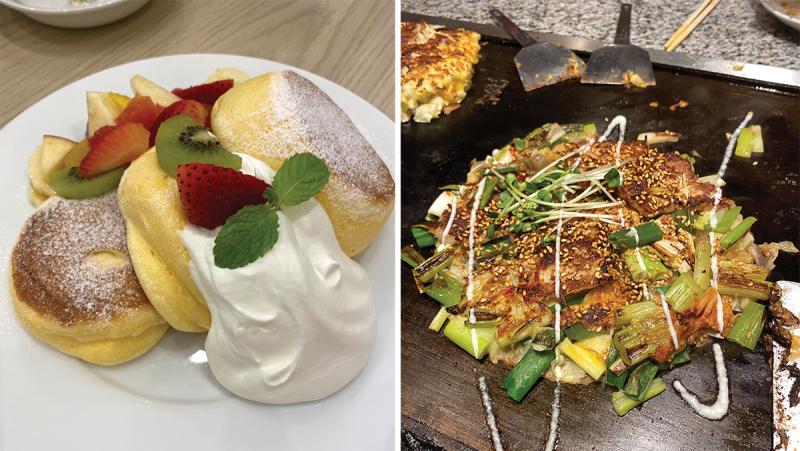
For authentic traditional style beef sukiyaki, try Mishima-tei, the main location in Honten has been there since the 1870s! Booking, again, is essential.
Nishiki Market is mind-blowing; the variety, the fresh ingredients, and the energy of the shopkeepers and crowds are infectious. Go for lunch and try everything! Our favorites: tamagoyaki (Japanese omelet), senbei (rice crackers), tsukemono (various kinds of Japanese pickles) and any of the seafood. Top tip: Don’t walk and eat; this is considered rude in Japan.
Day Trip to Sakai City
To learn about the craft and origins of knife-making, we took a day trip to Sakai City, about an hour and a half by train from Kyoto. We booked the knife-making experience with Sakai Wada, which began with a visit to the local craft museum. There, we learned about the incredible range of knives—and even some swords—each with a specialized purpose, from fish scaling to vegetable peeling. We watched artisans demonstrate the forging and sharpening process and had the chance to practice some sharpening skills before choosing our own blade and custom handle. Plus, you get to take home a personalized engraved knife!
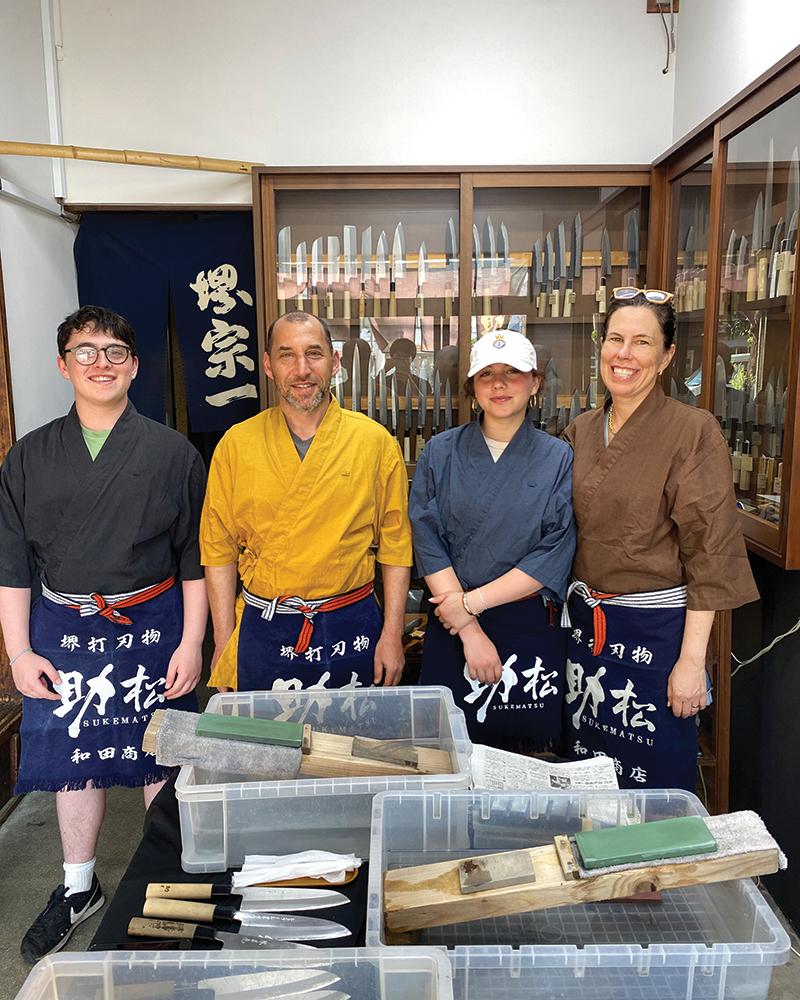
From Sakai, we continued to Osaka, famously dubbed “Japan’s Kitchen,” but also fun for all the lights, techy 3D billboards and infectious energy. Our culinary adventure took us to Mizuno near the Dotombori Arcade, a highly recommended restaurant for okonomiyaki (savory pancakes) that has a permanent line snaking around the front. Watching our okonomiyaki cooked right in front of us added to the fun, and the line moved quickly—well worth the wait. At Kuromon Ichiba Market, we discovered more unique treats, including creamy vanilla soft serve served in a fresh half-melon at Kuromon Maru. We also indulged in fluffy pancakes at A Happy Pancake, absolutely loving these light and airy Japanese-style soufflé pancakes.
Final Tips: Kyoto and Osaka
Hiring a guide can elevate your experience, helping you navigate Kyoto with ease and tailoring a personalized itinerary. We highly recommend Kyoto Visitors Host. We spent an incredible day with Yuko Katsumi, who guided us through some of Kyoto’s stunning temples and introduced us to a local udon spot. For a quieter experience, arrive early to temples and historical sites. But when exploring the bustling city streets and food markets of Kyoto and Osaka, embrace the lively crowds—they’re part of the charm.
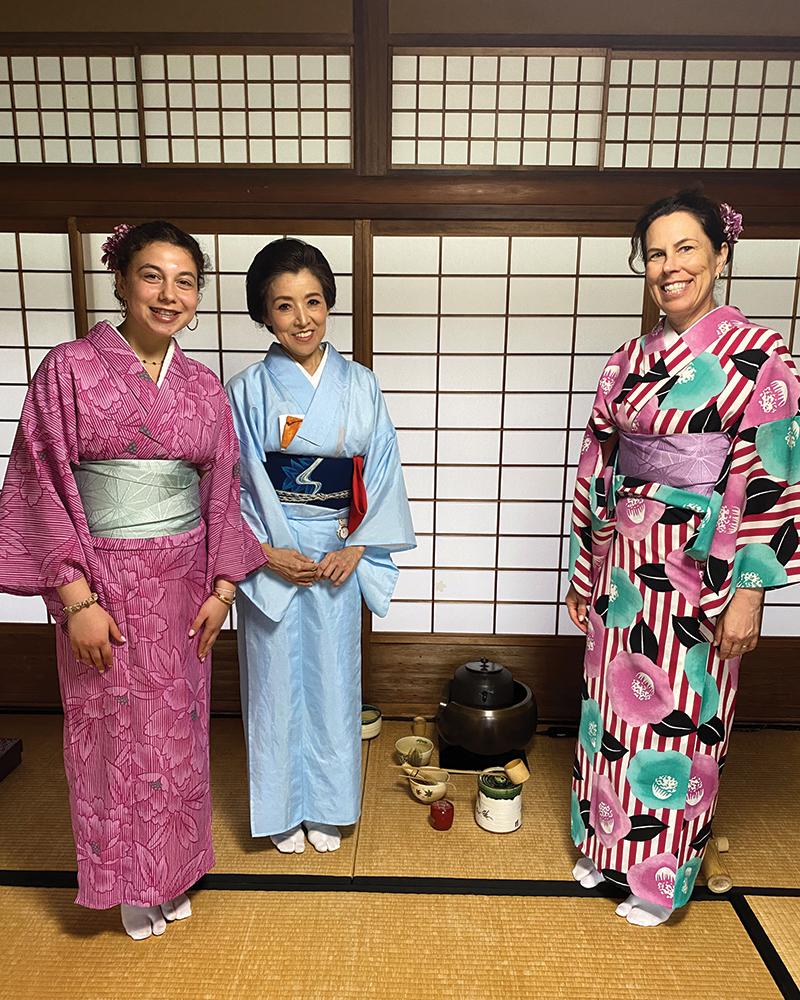
If you go, we suggest the following apps, which helped us get around easily:
- Suica: Use this to pay for most subways and trains in Japan.
- Google Maps: Excellent navigation for trains, subways, busses and just walking around.
- Google Translate: Instantly ask or translate text, audio and images.
Related Articles
Six Senses Kyoto Opens, Marking Brand Debut in Japan
Capella Hotel Group Announces Expansion Plans